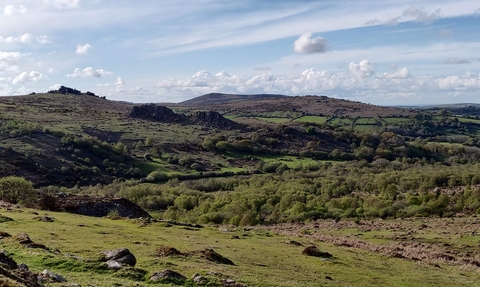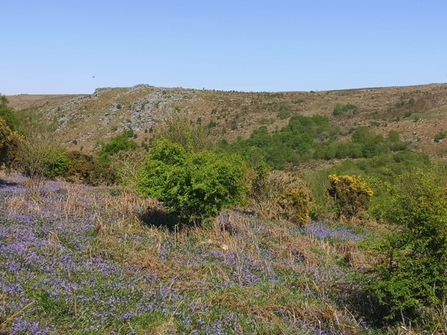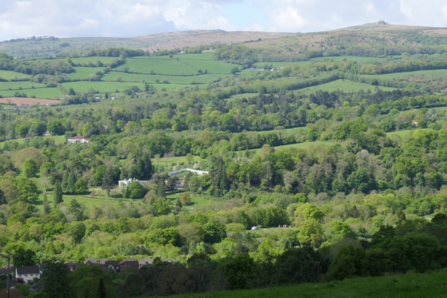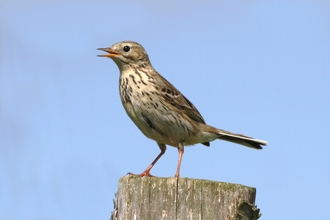
East Dartmoor Landscape Recovery Area
Supporting nature recovery by working with local people in East Dartmoor
We are delighted to have been selected by Defra for the first stage of its ambitious Landscape Recovery Scheme which is a key pillar of the new Environmental Land Management Schemes (ELMS). Our pioneering project will be based in East Dartmoor. We’ll work with partners, local farmers, landowners and communities to support nature recovery and resilience on a landscape scale, extended up to 5,000 hectares
Defra announced that the East Dartmoor Landscape Recovery Area was one of just 22 successful applications in England and would be offered two years’ support for project development and if this phase is successful, the Scheme would be supported long term by implementation agreements of at least 20 years .

Why East Dartmoor?
East Dartmoor is a special place. Its landscape contains a mosaic of tors, moors, mires, and heaths, together with species-rich grasslands and arguably its greatest wildlife asset of all, the wooded valleys, which contain internationally important temperate rainforests (also known as Atlantic oak woodlands). East Dartmoor has become a refuge for a wealth of wildlife species that are threatened with extinction elsewhere.
However, with visitor pressure at an all-time high, wide-ranging risks exerted by a fast-changing climate, a succession of emerging tree diseases and many other threats, the health of this landscape hangs in the balance.
What are the goals of the East Dartmoor Landscape Recovery Area?
Changes to farm support programmes in England will have major impacts on future land management. Local people who farm and manage the land will face some income streams reducing and others disappearing altogether. The Landscape Recovery Scheme offers an opportunity to secure alternative support for rural livelihoods, and to ensure nature’s future resilience and recovery.
We envisage future East Dartmoor as a thriving, working landscape with outstanding natural diversity and resilience, where natural processes, such as soil and peat formation and natural woodland regeneration, play important roles. Strong networks of vibrant, dynamic habitats will show England’s uplands at their very best.
How will these goals be achieved?
The partnership will fulfil the Landscape Recovery Scheme’s criteria by:
- Expanding premiere nature sites - making space for temperate rainforest, wet woodlands, mires and heaths to increase in size
- Connecting fragmented habitats, and reinforcing links between the Becka-Bovey-Wray catchment and neighbouring valley systems such as the Dart and Teign
- Enhancing habitat quality for threatened species populations by restoring native woodlands and other semi-natural habitats, and controlling invasive non-native species
- Naturalising watercourses, softening hard boundaries between land uses, and promoting grazing with the hardy native breeds best suited to stimulating natural habitat regeneration
- Diversifying encouraging greater variety and abundance of species, and exploring the possibility of reintroducing native fauna that has been recently lost from the landscape (such as pine martens and water voles)
- Inspiring new partnerships between land managers to share knowledge and experience, and stimulating the adoption of management practices that benefit both people and wildlife.

Who is involved in the East Dartmoor Landscape Recovery Area?
East Dartmoor land use ranges from cattle and sheep rearing to blueberry farming, tourist attractions to nature reserves, ornamental woodlands to commercial forestry. The Scheme will work with farmers, commoners, land and business owners to develop a partnership project of national importance.
Devon Wildlife Trust is leading the East Dartmoor Landscape Recovery Area, and partners that have already committed to this venture include Dartmoor National Park Authority, Devon Biodiversity Records Centre, National Trust, Natural England, RSPB, and Woodland Trust and Oxygen Conservation Ltd. All have successful track records of working alongside farmers and landowners to secure agri-environment funds for landscape-scale, conservation land management. Together the partners also play vital roles as owners and managers of substantial landholdings in the East Dartmoor project area.
Further specialist skills and knowledge vital to project delivery will be provided by the University of Exeter.
What happens next?
In its two-year development phase the East Dartmoor Landscape Recovery Scheme will:
- Establish the needs and aspirations of local farmers, landowners and other rural business owners, agree our shared goals and co-design subsequent stages of the project
- Agree the nature outcomes we aim to achieve in the medium and long term
- Identify where there are gaps in the existing mosaic of wildlife habitat, and plan how we will continue to reconnect fragmented areas
- Create a detailed recovery plan for the whole project area, including zones to target for (for example) natural woodland regeneration or management of invasive species
- Develop a communications and engagement plan so that visitors and residents are aware of what is happening and why, leading to widespread involvement and support
- Secure additional resources from external funders and investors.
Contact
Nathan Robinson
East Dartmoor Landscape Recovery Area Development Officer

